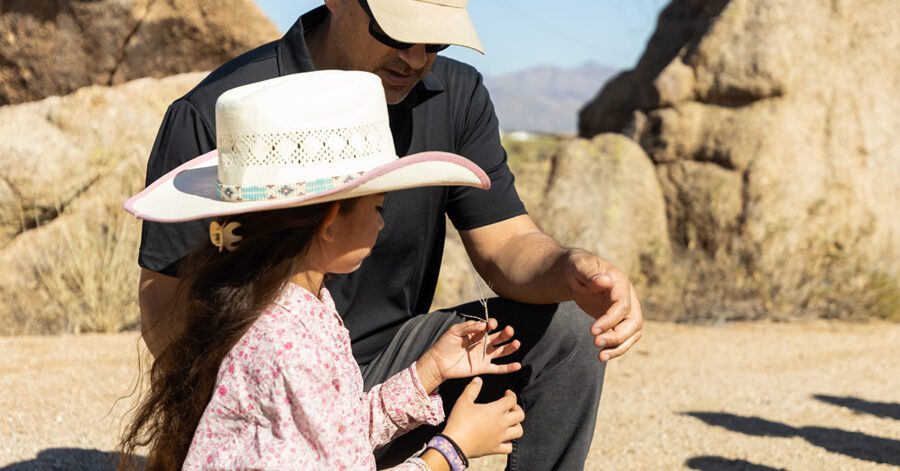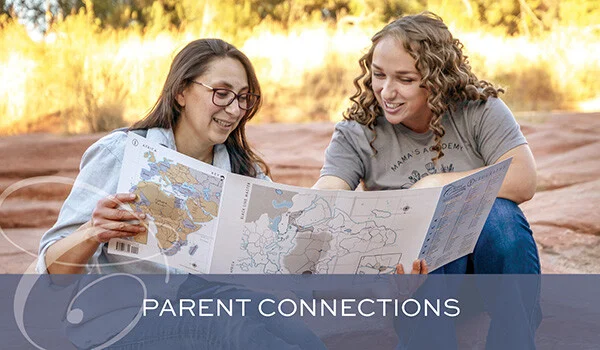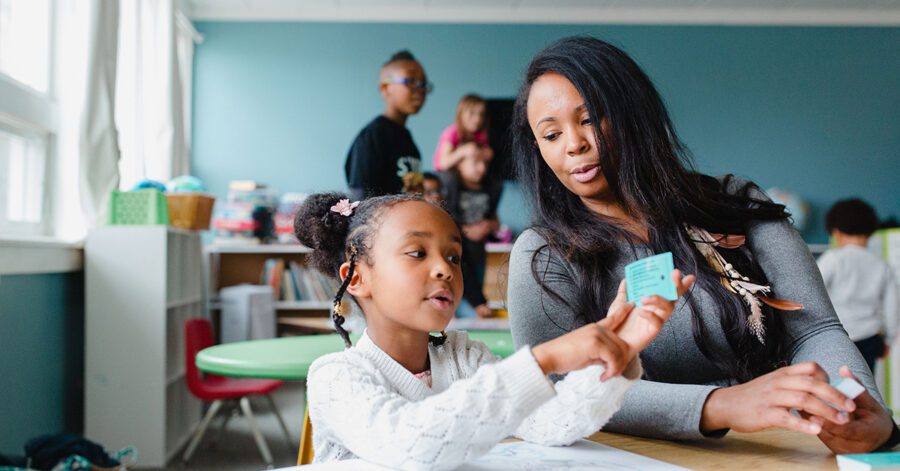Did you ever wish someone had instilled a love of learning in you when you were young? Many homeschool parents feel unprepared when it comes to teaching their children the lifelong classical skills of learning, especially when those skills weren’t part of their own education.
But here’s the good news: learning is a natural process, especially for young children. By using the Five Core Habits of Grammar—Naming, Attending, Memorizing, Expressing, and Storytelling—you can equip your children with the tools they need to explore God’s world with wonder and joy.
The classical model of education is a method that works with your child’s natural curiosity and love for learning. These core habits are more than academic tools; they are daily practices that help children engage with ideas, absorb knowledge, and express their creativity.
In this article, we’ll walk through each of the Five Core Habits and show you how to implement them at home. Just like you “dress” your child for the day, these habits will help you clothe their minds with the skills they need to learn—and love—what’s true, good, and beautiful.
The Original Meaning of Habit
The earliest English definition of habit is: “to garb, dress, or clothe.”  This meaning stems from the Latin root, habitus, which means “condition, demeanor, appearance, dress.”
Modern English speakers rarely use this definition anymore except in the cases of a “nun’s habit” or a “riding habit.” For our purposes, let’s return to the original definition as we consider the Five Core Habits of Grammar.
Nurturing Habits: Preparing for Learning
Remember mornings when you wrangled your squirmy toddler into their clothes?
You probably selected their outfit based on the season and weather, the day’s upcoming activities, what was laundered, and those favorite toddler clothing “preferences.” As your child bounced out of the room, they were ready to meet the day. You had practiced the “habit” of nurturing.
In the same way, practicing the Five Core Habits of Grammar helps us garb, dress, and clothe our children with good habits for learning. The classical skills of Naming, Attending, Memorizing, Expressing, and Storytelling (NAMES) build knowledge and lay the groundwork for future studies.
Drawing on a young child’s natural curiosity and inclination to absorb all manner of ideas and facts, the Five Core Habits prepares them for a wonder-filled encounter with God’s Creation.
Let’s start with “putting on” the habit of Attending.
Attending: Seeing the World with New Eyes
Creation is God’s classroom. To practice the core habit of Attending, children need time. By slowing down and encouraging them to use their senses, children become aware of the wonders around them.
As we practice this habit, an ordinary day becomes a game of hide-and-seek. Be prepared. These explorations are frequently unplanned and spontaneous. In other words, dawdling and getting messy are required!
Asking questions helps children focus and experience the world from all angles. Try sensory questions such as:
- What do you see?
- Hear?
- Smell?
- Feel?
- Taste?
A fall leaf, a freshly baked brownie, a crescent moon, or a well-designed bridge become unexpected amazements for both you and your child.
Asking comparison questions adds another layer to “seeing” as children grow in their practice of Attending.
New discoveries can be compared to previous ones, and exploring similarities and differences helps children ponder what something is and what it is not. Comparing opens the door to every part of God’s Creation.
Naming: Building Knowledge through Words
Children ask all kinds of questions, but their favorite by far is, “What’s that?”
Naming is how young children grow in their understanding of the world’s particulars through engagement and relationship. It’s a give-and-take between the “asker” and the “answerer.”
Children need experts. And tag, YOU’RE it! Curiosity sparks questions, and your child’s repeated, and at times tedious, inquiries are really clues to their thoughts, interests, and passions.
Knowing the right word will help children deepen their understanding of what something is, how it is classified and categorized, and how it is unique from other things. Get ready to clothe your child’s mind with various words, terms, and names.
Consider adding new items to their wardrobe such as:
- field guides
- nature journals
- picture encyclopedias
Helping Children See the World in Rich Detail
For example, when your child sees a bird and asks its name, you practice the core habit of Naming by first pointing out and naming its parts, such as feather, beak, and wing. You might ask your child to use words to describe the bird’s color pattern, song, or movement.
As you talk together, you model how to use categories to richly describe the bird’s uniqueness, such as a songbird, shorebird, or raptor. These conversations guide your child’s gaze and broaden their understanding with new and rich words.
As your child acquires more words, they begin to recognize and categorize the types of birds. Knowing these will help your child identify whether they are seeing a pigeon or the rare Blue-eyed ground dove! The world’s complexities begin to form as harmonious parts of a whole instead of isolated fragments of facts.
The practice of Naming celebrates God’s world as a beautifully unique and unified Creation.
Memorizing: Anchoring Ideas with Familiarity
The core habit of Memorizing is like that favorite t-shirt your child demands to wear every day!
Familiarity is comfort. Memorized words and facts bring a similar comfort. As your child learns about this big and sometimes seemingly random world, they use their memory of the familiar to bring a sense of order and predictability.
That predictability is one reason they echo everything they hear! Big words, chants, rhymes, poems, jokes, and songs are ways children parrot back the words and ideas they hear.
They are beginning to create categories and build a library of ideas in their minds. This natural appetite to memorize is an invitation to parents. You have the privilege of choosing which beautiful scriptures, lovely poetry, rich vocabulary, thorough definitions, and foundational facts to add to your child’s library shelf.
Memorizing helps your child develop his or her understanding of the world. Their confidence grows as their wardrobe expands.
Expressing: Sharing Ideas with Creativity
Showing off their latest outfit is a favorite activity for most children! A newly acquired soccer uniform complete with MATCHING shin guards and t-shirt or that Cinderella dress with plastic glass slippers are treasures children are eager to model.
By practicing the core habit of Expressing, children share the ideas they love with the people they love. Using their whole body, children are enthusiastic to demonstrate what they’ve learned through dancing, singing, reciting, painting, cooking, building, sculpting, acting, or crafting.
Turning Wonder into Creativity and Connection
As children encounter the natural world, they spontaneously express astonishment and want to capture this excitement with movement. Young children express their creativity in spontaneous and unstructured ways.
As children mature, they become more deliberate when deciding how best to express their ideas. This maturing develops foresight and deepens understanding. The results are impressive.
For example, a few shells become an extensive collection, nature journals become works of art, and a few science facts about Mars become an impressive 3-D model.
Expressing helps children incarnate the words and ideas they’ve learned and memorized. It’s a child’s way of sharing all they’ve learned about the world with the world.
Storytelling: Connecting Through Shared Experiences
If you’re around a young child for a few minutes, you’ll discover their love for storytelling. Children love to share stories about the “and-then-this-happened” with whomever is in their path.
Putting on the core habit of Storytelling is not difficult, and it is lots of fun! Realizing the importance of a child’s experiences and their need to share with both spoken and written words are at the heart of this core habit.
Recounting events through Storytelling supports a child’s understanding of what they’ve learned and what they remember. When they share a best-loved story, children are practicing their understanding of what a story is—that it has a beginning, middle, and end and includes a setting, character, and plot.
Here are some other Storytelling benefits:
- When children recount a celebrated holiday, they practice using descriptive and expressive words.
- Remembering and narrating Bible stories deepens a child’s understanding of God’s ways and opens the door for life-changing conversations.
- When your child shares a recent discovery from their nature journal, he or she is sharpening their observation skills and engaging someone else in the joy of their discovery.
Storytelling is how children connect by sharing their delights, dreams, and disasters. It helps us, as parents, see the world from our children’s perspective, which adds to OUR wardrobe.
Garbed and Ready: The Power of the Five Core Habits
Just like those daily nurturing habits, the Five Core Habits of Grammar —Naming, Attending, Memorizing, Expressing, and Storytelling, are skills that help your children engage with God’s Creation.
By putting on these habits, they will be garbed, dressed, and clothed for any season of discovery and any new venture that comes their way—eager to add another “preference” to their growing wardrobe! Bouncing out the door, they are ready to meet the day.
As homeschool parents, you have the incredible privilege of equipping your children with these habits early. While you may not have experienced this kind of intentional training yourself, you can cultivate these skills in your children, preparing them to explore the world with confidence, creativity, and awe.
So, whether you’re naming the parts of a bird, helping your child memorize a favorite poem, or marveling together at God’s Creation, know that these small, daily practices are shaping young minds. With the Five Core Habits of Grammar, you are not only teaching your children how to learn, but also inspiring a lifelong love of discovery.
Want to learn more about the 15 Classical Skills that include the 5 Core Habits of Grammar?
Explore these blogs to see the connections:





